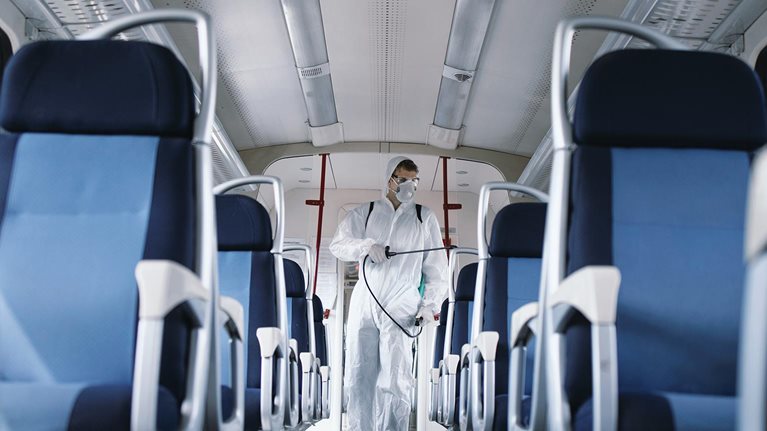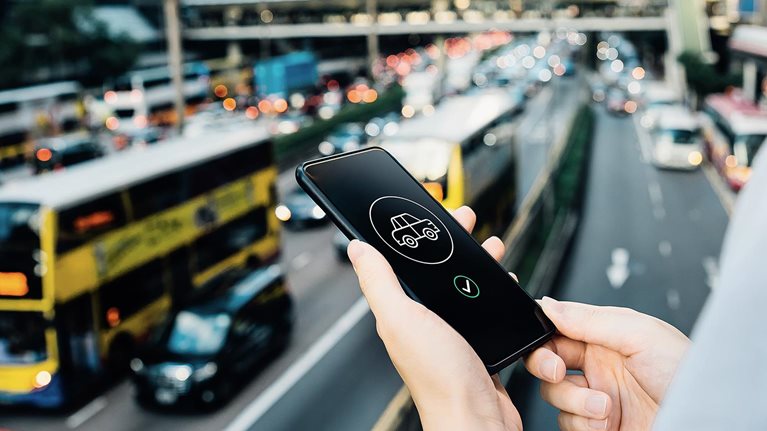Using public transport can be stressful and even unsafe for many commuters, including but not limited to women, senior citizens, and people with disabilities. From minor annoyances to violent crimes, getting from point A to B can be fraught with risk.
Goal 11 of the United Nations’ sustainable development goals exhorts member states to provide safe, affordable, and accessible transportation for everyone, especially those who find themselves in vulnerable situations. And yet, while disparate initiatives have been launched around the world to make public commutes safer and accessible for everyone, a survey of the United Nations’ and other international agencies’ research, plus our own analysis, suggests there is still more to be done across the three main stages of the commuter journey: planning and booking, the predeparture experience at boarding areas, and the travel itself.
In this article, we consider just how inclusive global public-transit systems are and explore ways that municipalities, urban planners, and other key stakeholders can assess and accommodate the end-to-end needs of all travelers.
How inclusive are our public-transit systems?
Over the past decade, international organizations such as the United Nations have made the concerted effort to study inclusivity in urban-transport systems as a means to guarantee fair opportunities for all commuters. The insights that have come out of this endeavor fall under two broad themes.
First, a collection of studies—including the UN Commission on the Status of Women’s Safe cities and safe public spaces for women and girls study—provide analyses of the key safety and communications issues that public-transport operators need to address. These include reducing violence and harassment on public transit, ensuring safer nighttime commutes, and providing clear, effective, around-the-clock communication between operators and travelers.
Second, a separate stream of research studies the main barriers that limit inclusion on public transit for women, people with disabilities,1 and low-income travelers, among others. Critical obstacles include, among others, poorly designed transportation, high ticket prices, inadequate safety regulations, and schedules that fail to account for the travel patterns of commuters with specific needs.
As they’ve become aware of these issues and limitations, many public-transit system providers and urban planners have launched initiatives to address them—to limited effect, however. Such campaigns and programs have typically been introduced in an ad hoc manner rather than integrated into the overall public-transport system.
Some cities, such as Los Angeles and Santiago, focused on surveying travel patterns of public-transit users, while others, including a major European capital and a large city in Southeast Asia, mostly worked on communication campaigns to raise awareness of nighttime safety. Other cities’ efforts were limited in scope. In Madrid, for example, on-demand bus stops were introduced on suburban routes during specific times to reduce the walking distance home for female passengers.
From booking to travel: An end-to-end approach to inclusion
It’s time for urban-transport providers to draw from our collective understanding of inclusion and design and implement an urban-transport system that works for everyone. While this article focuses on the customer journey, travel providers should not miss the opportunity to transform their own organizations as well (see sidebar, “From the inside out: Inclusion in the urban-transport workforce”).
To further contribute to our existing understanding of travel and inclusion, we conducted our own research. We surveyed more than 20 different public-transport operators around the world and identified key requirements and initiatives for an inclusive public-transport system. We found that while there are many initiatives to enhance inclusion, they are typically not part of an integrated, 360-degree framework. We believe that a comprehensive and integrated approach to inclusive transportation comprises initiatives that fall into six categories (Exhibit 1).

We mapped these requirements and initiatives along the commuter journey, which we broke down into three parts: the booking stage, the predeparture stage, and the actual travel experience (Exhibit 2). In each phase, there are actions travel providers can take to address specific pain points. We’ll explore those actions using the example of a rail-based journey—although the conceptual principles here can be applied to other forms of urban transport, such as buses and ferries.

The booking stage
It’s common nowadays for people to use navigation apps to find the most convenient route to their destination. The would-be passenger decides on the starting and arrival points, preferred mode of transport, and time of travel. They’ll factor in potential route disruptions (and explore alternatives, if necessary), how crowded the commute might be, and whether there are any loyalty-program benefits to be accrued.
This stage presents a number of potential pain points for some commuters. For instance, a wheelchair user may not know if a train station is equipped with elevators and if there are design barriers that may make it difficult to board and alight from a train.
Some cities have tried to create a more accessible and safe experience for senior travelers. For instance, Salzburg has launched initiatives to promote the use of public transport among older people.2 The city has hosted “mobility days,” and pamphlets on commuter safety can be found in all train stations. Salzburg’s bus drivers are also trained to be extra vigilant around older passengers, and vehicles are designed with senior citizens in mind. These initiatives have reduced accidents among older people and increased awareness among the remaining population.
Our research points to a number of actions urban-transport providers can take at the booking and planning stage to create more inclusion. For instance, they could create pooling options in their travel apps so that passengers could choose to commute in groups. They may offer special rates at this stage as well, to disabuse people of the idea that accessible travel options are more expensive than standard ones. Passengers could also be given the option to easily share their itinerary with their friends and loved ones for an additional layer of oversight.
Travel providers’ mobile apps may also provide a direct line of communication between the traveler and the provider and are a tool providers may want to use more strategically. Safety issues could be flagged immediately. Information about security measures, optimal travel times, and easy-access facilities could be relayed through this channel when passengers check and confirm their itinerary. The Transport for London, for instance, allows for just this with its dedicated journey planner; the app lets would-be passengers optimize their journey from the booking stage.
Predeparture phase
Arriving at a station or terminal can be an overwhelming experience, with hordes of people crisscrossing in every possible direction—businesspeople rushing to catch their trains with barely minutes to spare, families trying to herd rowdy children toward the right platform, and buskers plying their craft.
For many, the predeparture phase looks like this: you receive a push notification from your travel provider with information about your train’s departure time. To get to the platform you go through a thermal-imaging scanner that checks your temperature, you make it past the turnstile with an electronic ticket, and you find the correct platform, where you’ll wait to board.
For groups or travelers with specific logistical needs, this phase can be full of hazards. If they are early for their train, for instance, such passengers may find few accessible waiting spaces to accommodate them.
There are a number of ways urban-travel providers can improve the predeparture experience for all travelers. They may want to integrate important safety and pooling information into the departure reminder, noting the location of accessible facilities and safe train cars—carriages with an attendant, conductor, or security officer. Visual “nudges” and cues could promote positive behaviors, such as offering assistance to people with mobility constraints or to pregnant women. In stations where longer wait times are common, more rooms for nursing mothers and a greater number of dedicated waiting areas could be created. Treating the station as a civic space by promoting community-focused activities—such as increasing retail outlets and installing open pianos—could also enhance commuters’ sense of safety.
In 2006, the city of Graz, Austria, upgraded its key stops to make them both more accessible and livable;3 and, targeting both safety and comfort in its train platforms and stations, the Canadian cities of Ottawa and Toronto created designated Transecure waiting areas.4
Traveling and arriving at the destination
There are a number of actions travel providers can take to make passengers’ journeys inclusive once they are on board. For instance, it is possible for travelers on most trains to track their progress while en route—but it may not always be clear how to request help in cases of violence of harassment. Particularly when it comes to late-night routes, passengers may be in near-empty train cars. To provide peace of mind for all passengers, urban-travel planners should install highly visible GPS panic buttons throughout the system, as they have in New Delhi5 and Bangalore.6
Commuters with specific needs could be directed to the train’s safe wagons with security personnel and closer supervision. Pregnant women or passengers with specific physical needs could wear “May I sit” pins to alert other commuters to give way to them. Travel providers could also make it easier for these commuters to find information about connections and the safest ways to get to the next boarding point.
While our case study focuses on rail travel, alternative transport modes may offer other opportunities for greater inclusion. The flexibility afforded by bus travel presents more options for making the travel experience safer. Passengers could be allowed to alight, on request, at specific time slots, for example, from 10:00 p.m. to 6:00 a.m., to reduce the distance between the drop-off point to the final destination. This is exactly what the city of Madrid put in place, arranging on-demand night bus stops on interurban bus lines.7
Creating an inclusive urban-transport system doesn’t stop the moment a passenger gets off the train. Transport providers could review the arrival experiences and partner with security companies to provide additional support or with taxi and rideshare companies to provide special rates for arriving passengers.
Setting the goal of an entirely accessible public-transport system is becoming increasingly common in major cities worldwide. Barcelona has committed to a 100 percent accessible underground metro system by 2024, and Seattle is already fully wheelchair accessible.
Other municipalities and travel providers can do the same by undertaking a thorough assessment of customers’ needs along the whole journey, mapping the potential pain points, and implementing targeted initiatives to address them. Of course, this process is an iterative one; any initiatives launched should be evaluated and refined over time. The systemic, end-to-end approach outlined in this article should help make traveling in our cities truly safer for all.


